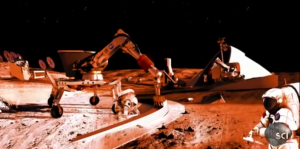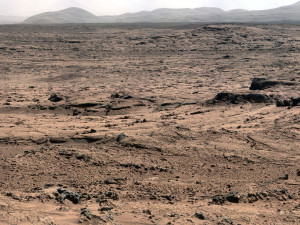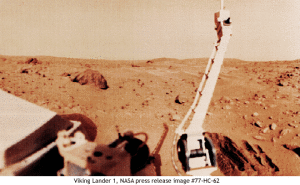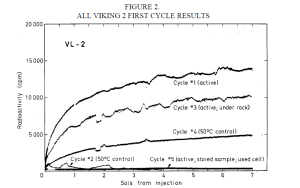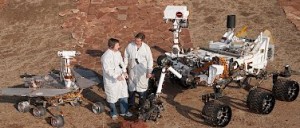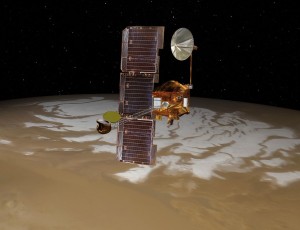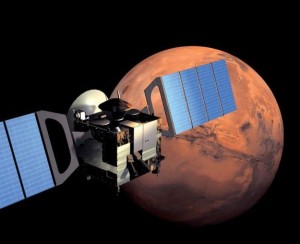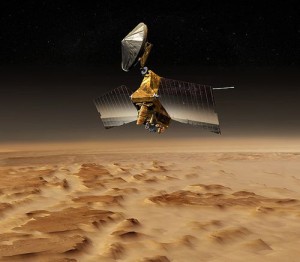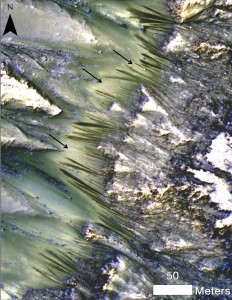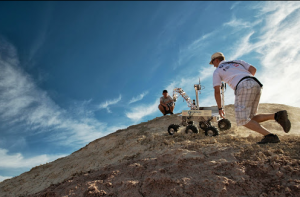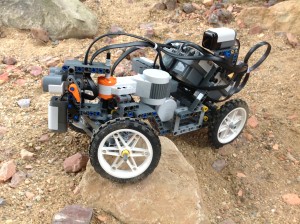Guest blog by Kathryn Sharp
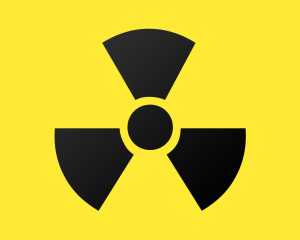 Recent years have seen an exciting uptick in the number of humans-to-Mars mission plans, from manned fly-bys to permanent settlements. Each lays out its own priorities and objectives, suggesting creative solutions to challenges common to all of them. One important challenge each mission will face is the danger of space radiation exposure over the course of lengthy interplanetary travel.
Recent years have seen an exciting uptick in the number of humans-to-Mars mission plans, from manned fly-bys to permanent settlements. Each lays out its own priorities and objectives, suggesting creative solutions to challenges common to all of them. One important challenge each mission will face is the danger of space radiation exposure over the course of lengthy interplanetary travel.
There are two major types of radiation: ionizing and non-ionizing. Many forms of nonionizing radiation will sound familiar: your car radio, cell phone, microwave, all of which operate at frequencies low enough that their energy isn’t sufficient to damage human DNA. These are therefore not considered to be carcinogenic, or cancer-causing. On the other hand, ionizing radiation carries energy high enough to break chemical bonds and damage DNA, which in turn increases the risk of developing cancer. Some examples include medical X-rays and CT scans, which, when used infrequently, do not significantly increase cancer risk, and radioactivity remaining from the era of atmospheric nuclear testing.
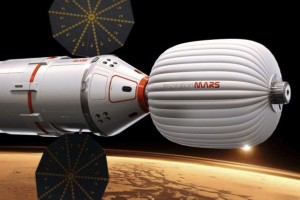 Of course, these are only man-made sources of radiation. The sun showers the Earth every moment with both ionizing and non-ionizing radiation. Thankfully, our protective atmosphere and magnetosphere shield us from a majority of the harmful radiation, with only some UV rays reaching the surface. Beyond our atmosphere however, solar energetic particles (SEPs), ejected from the sun by solar flares and coronal mass ejections, as well as galactic cosmic rays (GCRs) from interstellar space blast through our solar system unmitigated.
Of course, these are only man-made sources of radiation. The sun showers the Earth every moment with both ionizing and non-ionizing radiation. Thankfully, our protective atmosphere and magnetosphere shield us from a majority of the harmful radiation, with only some UV rays reaching the surface. Beyond our atmosphere however, solar energetic particles (SEPs), ejected from the sun by solar flares and coronal mass ejections, as well as galactic cosmic rays (GCRs) from interstellar space blast through our solar system unmitigated.
In space, astronauts face much higher radiation exposure from these sources than we do down here on the surface. On average, an astronaut on the International Space Station (ISS) will receive as much radiation in one six-month stay as they would in twenty years back home on Earth. As humans venture beyond low-Earth orbit and the sheltering bands of Earth’s magnetic field, their lives will depend on proper shielding in their spacecraft.
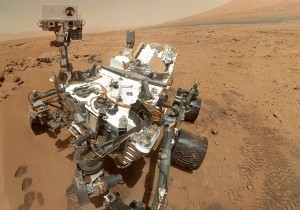 In 2011, when the Mars Science Laboratory (MSL) Curiosity Rover launched from Cape Canaveral it carried with it a small instrument for measuring space radiation in a shielded environment similar to that of a manned mission. Based on the measurements of the unit called the Radiation Assessment Detector (RAD), Marsonauts would receive a dose equivalent of roughly 0.6 Sieverts (Sv) in 360 days of travel to-and-from Mars, not counting any radiation received while operating on the surface of Mars itself. This dose is akin to receiving 1 to 2 abdominal CT scans each week over the course of a year.
In 2011, when the Mars Science Laboratory (MSL) Curiosity Rover launched from Cape Canaveral it carried with it a small instrument for measuring space radiation in a shielded environment similar to that of a manned mission. Based on the measurements of the unit called the Radiation Assessment Detector (RAD), Marsonauts would receive a dose equivalent of roughly 0.6 Sieverts (Sv) in 360 days of travel to-and-from Mars, not counting any radiation received while operating on the surface of Mars itself. This dose is akin to receiving 1 to 2 abdominal CT scans each week over the course of a year.
Currently, NASA limits the cumulative lifetime dose for its astronauts at 1 Sievert. This dose is associated with a roughly 5% increase in lifetime cancer risk. For reference, the current lifetime risk of dying of cancer for someone in the US is around 20%, so a dose of 1 Sv would raise this risk from 20 to 25%. While 0.6 Sieverts is a large dose of radiation in a relatively short period, clearly it is within established limits and should not halt further development of manned missions to Mars.
Although this dose falls within NASA’s established limit, developers of any future crewed Mars mission shoulder the responsibility of sheltering its astronauts and reducing their exposure to the lowest levels possible. How can we limit the radiation dose to Marsonauts in an efficient and cost-effective way?
 Three major factors limit a person’s exposure to radiation: time, distance, and shielding. Limiting the time astronauts are exposed to space radiation is a surefire way to reduce their dose. However, the only way to reduce the time of exposure is to speed up the spacecraft: no easy feat. Existing spacecraft rely on heavy fuels, which in turn lead to heavier payloads, resulting in slower speeds and higher costs. Conceptual space vehicles that rely on other sources of energy, such as nuclear power, are on the drawing board, but waiting through the long development period for such technologies will only further delay a crewed mission.
Three major factors limit a person’s exposure to radiation: time, distance, and shielding. Limiting the time astronauts are exposed to space radiation is a surefire way to reduce their dose. However, the only way to reduce the time of exposure is to speed up the spacecraft: no easy feat. Existing spacecraft rely on heavy fuels, which in turn lead to heavier payloads, resulting in slower speeds and higher costs. Conceptual space vehicles that rely on other sources of energy, such as nuclear power, are on the drawing board, but waiting through the long development period for such technologies will only further delay a crewed mission.
Because the source of solar energetic particles, the sun, is a fixed source, and because galactic cosmic rays are pervasive throughout the solar system, we cannot significantly increase the distance between the astronauts and the source of the radiation. At this time, the most convincing method of reducing exposure is effective shielding. Unfortunately, different materials are necessary to shield against different types of radiation. For example, high-energy gamma rays require very dense, thick materials, such as lead, to shield, whereas neutrons are best-shielded by hydrogen-rich materials such as concrete. These are both heavy materials that will add significant mass to the payload, requiring more fuel and incidentally, more money.
Current radiation shielding plans minimize the amount of these materials by allowing for a narrow shelter in the center of the spacecraft to be used during large SEP-producing events such as solar flares or coronal mass ejections. The measurements taken by the RAD aboard Curiosity confirmed that this type of arrangement would be sufficient to shield the majority of SEPs, but astronauts would still be vulnerable to, and receive the majority of their dose from, galactic cosmic rays. This constant stream of heavy, high energy particles presents the biggest shielding challenge.
Several mitigation strategies are being considered to reduce the dose from GCRs. We could utilize existing resources aboard the ship, such as the crew’s water or fuel supply, as shielding agents. Water is an excellent shield for GCRs, but it is heavy. A water shield around the crew’s living quarters would need to be several meters thick, and could add hundreds of tons to the payload. This is an insurmountable weight for current mission designs, and would send launch costs skyrocketing.
Alternatively, we could construct the spacecraft from light, hydrogen-rich plastics such as polyethylene rather than the aluminum shell that the ISS employs. This could reduce both the payload weight and cost, but further research is necessary in order to improve the strength and heat tolerance of these materials. Another theoretical strategy would be to generate a small magnetic field to deflect incoming radiation much the same way Earth’s magnetic field functions. Generating a magnetic field requires energy however, and generating one large enough to shield an entire spacecraft would require considerable energy: a precious commodity when you are 35 million miles from home.
 While all possible ways of limiting radiation exposure ought to be explored, it is important to keep these risks in context. In his book, The Case for Mars, Mars Society President Dr. Robert Zubrin puts these concerns in perspective: “While such doses are not to be recommended to the general public, they represent a small fraction of the total risk of not only space travel, but such common recreations such as mountain climbing or sailboarding. Radiation hazards are not a showstopper for a piloted Mars mission.”
While all possible ways of limiting radiation exposure ought to be explored, it is important to keep these risks in context. In his book, The Case for Mars, Mars Society President Dr. Robert Zubrin puts these concerns in perspective: “While such doses are not to be recommended to the general public, they represent a small fraction of the total risk of not only space travel, but such common recreations such as mountain climbing or sailboarding. Radiation hazards are not a showstopper for a piloted Mars mission.”
As Zubrin’s statement suggests, we must bear in mind that a manned Mars mission is not a routine endeavor, it is an extraordinary one. Every extraordinary mission in the history of mankind has involved significant risk, and with it, the potential for remarkable reward. We can and should do our best to limit these risks, but must understand that we cannot eliminate them.
[Images: publicdomainpictures.net, Inspiration Mars, NASA]
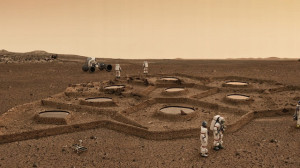 3-D Printing, what is it and what is all of the hubbub? A very simple analogy of 3-D printing would be if you imagine a regular printer, printing ink onto paper and going back and forth layering the ink on the paper thousands of times until you build up a three dimensional object. When a 3-D printer is in action, it may use a variety of different types of “ink”, including types of plastic, cement, and just about any material that has a liquid viscosity that later dries and hardens. This technology is widely considered to be a game changer for everything from daily life to manufacturing and construction. Almost anything can be printed with the correct type of printer and “ink”. For example, if you are missing a vital piece of plastic for your washing machine, as long as you can acquire a digital copy, by scanning the object or downloading it, you can send that information to the printer and voilà, your washer is now easy to fix. A variety of different types of three dimensional printing machines are now available. The prices vary dramatically. Some home use printers are as inexpensive as $300. Commercial printers can range from $10,000 to $20,000.
3-D Printing, what is it and what is all of the hubbub? A very simple analogy of 3-D printing would be if you imagine a regular printer, printing ink onto paper and going back and forth layering the ink on the paper thousands of times until you build up a three dimensional object. When a 3-D printer is in action, it may use a variety of different types of “ink”, including types of plastic, cement, and just about any material that has a liquid viscosity that later dries and hardens. This technology is widely considered to be a game changer for everything from daily life to manufacturing and construction. Almost anything can be printed with the correct type of printer and “ink”. For example, if you are missing a vital piece of plastic for your washing machine, as long as you can acquire a digital copy, by scanning the object or downloading it, you can send that information to the printer and voilà, your washer is now easy to fix. A variety of different types of three dimensional printing machines are now available. The prices vary dramatically. Some home use printers are as inexpensive as $300. Commercial printers can range from $10,000 to $20,000.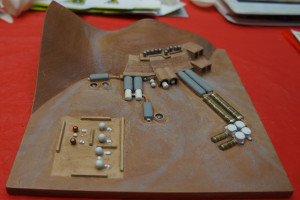 Dr. Robert Zubrin, President of The Mars Society, has stated that we must use the resources that are available to us on the Red Planet in order to survive and thrive. This is extremely important since every pound of material we launch from Earth will be very expensive, approximately $50,000. So we must live off the land, as much as we possibly can in order to reduce the cost of the mission. 3-D printers can use the Martian soil to print homes, buildings for humans to live and work in, and other essential infrastructure for a society. With the correct additives to the soil and water, which is already present in the soil, 3-D printing should be a breeze on Mars.
Dr. Robert Zubrin, President of The Mars Society, has stated that we must use the resources that are available to us on the Red Planet in order to survive and thrive. This is extremely important since every pound of material we launch from Earth will be very expensive, approximately $50,000. So we must live off the land, as much as we possibly can in order to reduce the cost of the mission. 3-D printers can use the Martian soil to print homes, buildings for humans to live and work in, and other essential infrastructure for a society. With the correct additives to the soil and water, which is already present in the soil, 3-D printing should be a breeze on Mars.